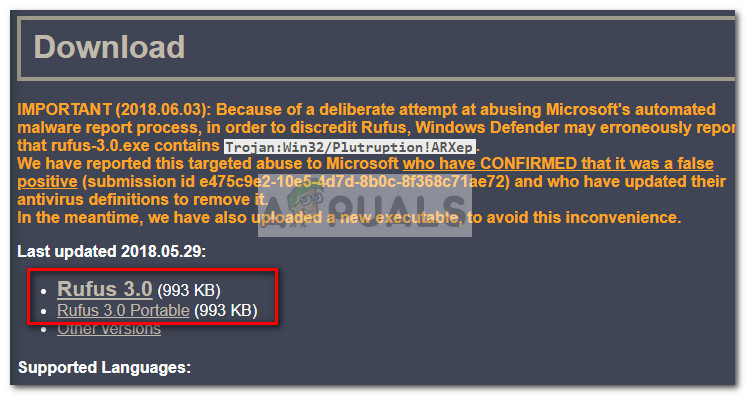

- #Ubuntu create bootable usb on mac how to#
- #Ubuntu create bootable usb on mac for mac#
- #Ubuntu create bootable usb on mac install#
- #Ubuntu create bootable usb on mac full#
- #Ubuntu create bootable usb on mac portable#
You’ll also need to mount several of the top-level directories, which is easiest to do with the following (long one line) command:įor i in /dev /dev/pts /proc /sys /run do sudo mount -B $i /mnt$i done. But make sure to double check the formatting, especially for underscores, and dashes. Tip: you can select something on this page, copy it with ctrl-c, and paste it into the terminal with shift-ctrl-v. Run this command in the terminal window (replace ‘/dev/sdaN’ with the device that corresponds to your /ext4 partition that you made a note of earlier – mine was ‘/dev/sdd2’)) (it mounts your /ext4 Ubuntu installation to /mnt):. Open up a Terminal window (similar to launching GParted):. So, we need to go into the Ubuntu installation and create a boot.efi file that we’ll use to boot it. #Ubuntu create bootable usb on mac for mac#
Ubuntu has been installed on your SSD, but you won’t be able to boot into it since there’s no EFI boot loader, needed for Mac firmware to recognize the OS as bootable.
When it is finished, choose “continue testing”, as we have a few more things to do. Go through the rest of the installation. Choose this device for boot loader installation: select the device that corresponds to the ext4 partition. Click change… and apply these options (there should be a better way to do this, but this works):. Your best confirmation is to look at the size of the disk. Find the ext4 formatted partition you just created in GParted. Double click “Install Ubuntu” in upper left corner on the desktop. Connect to WiFi (this saves time later, but is optional). Make a note of the ext4 partition name, e.g. Apply the new partitions by clicking the green check. New size: default (unless you want yet another partition). Add another new partition with the following options:. New Size: 8192 MiB (this should match your RAM, e.g. Add a new partition (click Partition > new). Click the green check box to apply the operations. The delete operations are now queued, but have not been applied. Mine had two partitions to delete: a fat32 system with label EFI, and a hfs+ system with label EmptyDrive. Delete all the partitions EXCEPT the hfs+ Ubuntu Boot Loader partition. Make sure the size of the drive makes sense. select /dev/sdd, or whatever the appropriate letter is for you). In GParted, find your external SSD drive in the upper right box (e.g. Open GParted (click the upper left corner icon, type in “GParted” and click the GParted Partition Editor application icon). Select the Orange EFI Boot option (right arrow, enter). With the option key pressed on your keyboard, boot up your Mac. Insert your USB flash drive that has the Ubuntu installer on it. #Ubuntu create bootable usb on mac install#
Part 2: Install Ubuntu on the external SSD Start up an Ubuntu live session
Select the Untitled partition, click erase, and rename it to Ubuntu Boot Loader. In the window that pops up informing you that a new Untitled partition will be created, accept by clicking Partition. That is overkill, but it makes things simple. In this example I changed the original ~128 GB to ~127 GB. Reduce the size of the EmptyDrive partition by at least 128 MB. With the external SSD drive selected, click Partition. Click Erase with these options (if it fails, just try again):. Select your external SSD drive (NOT your Mac’s hard drive!). Insert your external SSD drive into your Mac. 
Let’s get started! Part 1: Formatting your external SSD drive
#Ubuntu create bootable usb on mac full#
It is more appropriate for a full install of an operating system than a flash drive is. So it should be more reliable (and faster) than a generic USB Flash drive. Why this drive? According to the specs it is FAST, and it is a SSD, not a standard USB Flash drive. A blank SSD drive, like this SSD USB drive ($70-130 on Amazon for the 128 GB and 256 GB versions).A bootable USB flash drive for installing Ubuntu: instructions.An Intel powered Macbook (may have to be newer than 2013) with 2 USB ports.This requires permanent changes to your Mac Use a persistent Ubuntu live session… certain features do not work.You do NOT want to make any permanent changes to your Macbook.You do NOT want a virtual machine because they are slow.
#Ubuntu create bootable usb on mac portable#
You want to have a portable full install of an Ubuntu system for prototyping. We will generally be following these instructions, with a few key modifications. #Ubuntu create bootable usb on mac how to#
This guide will show you, step by step, how to install a full version of bootable Ubuntu on a SSD (solid state drive, or any other external drive), using only your Macbook. I am not an expert, and likely cannot solve any issues you encounter. Warning: This is a complicated process, and you might screw things up.






 0 kommentar(er)
0 kommentar(er)
